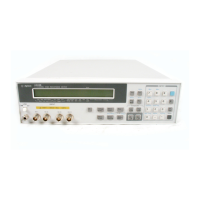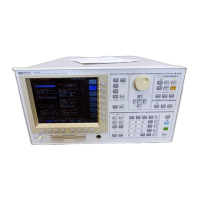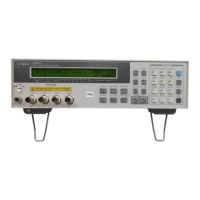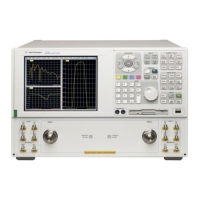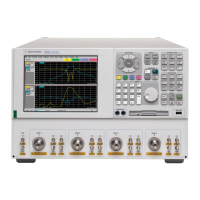32 Chapter 2
Measurement Concepts
Calibration/Normalization
Measurement Concepts
taken using the same analyzer settings as will be used for the
measurement of the DUT. A calibration created by measuring both an
open and a short is more accurate than doing a simple normalization
using only one or the other of these devices. It is, however, possible to do
either an Open Only or a Short Only calibration by simply storing a
trace, taken with either an open device or a short device, in the
Reference Trace, that is, in Trace 3.
If you terminate a connector in a short, the short cannot dissipate
power. Since there is nowhere for the power to go, a reflected wave is
returned back down the line. There can be no voltage across a short so
the reflected wave is equal in magnitude and 180 degrees out of phase
with the incident signal. (The sum of the incident voltage wave and the
reflected voltage wave must equal zero at the short.)
In a similar way, an open connection will reflect back a waveform that is
of equal magnitude, but is in phase with the incident voltage wave. So
the open and short data are 180 degrees out of phase with each other.
When they are averaged together they form a more accurate
representation of the analyzer characteristics.
NOTE Any two waves traveling in opposite directions cause a “standing wave”
to be formed on the transmission line. Standing wave ratio (SWR) is
defined as the standing wave maximum voltage over its minimum
voltage.
Normalization Concepts
Normalization can be used on a transmission measurement to correct
for frequency response errors. The frequency response of the test
system must be measured and stored as a reference trace, and then
normalization is used to eliminate this error from the measurement.
To measure the frequency response of the test system, connect the test
system as desired for the measurement. Then remove the DUT from the
system replacing it with a thru connection. Measure the frequency
response of the system, and store this as a reference trace.
Press
Source, Normalize, Store Ref (1 -> 3) to access this functionality.
The frequency response of the test system is stored and a normalization
can be performed. Press
Source, Normalize, Normalize On to activate
normalization. This means that the active displayed trace is now the
ratio of the input data to the stored data.
When normalization is on, the normalization reference data is
subtracted from the measured data and the normalized reference
position/level settings are applied to the displayed trace data.
Normalized reference position is indicated by arrowheads at the edges
of the graticule.
Reconnect the DUT to the analyzer. Note that the units of the reference
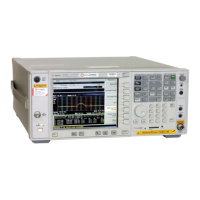
